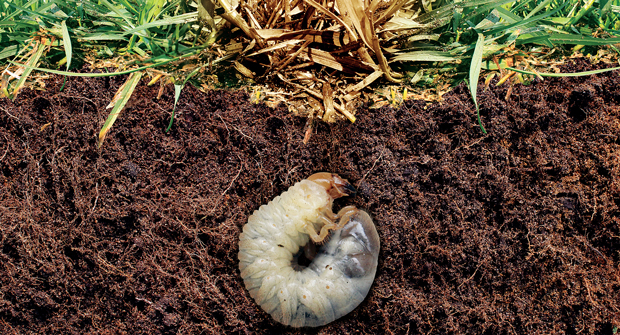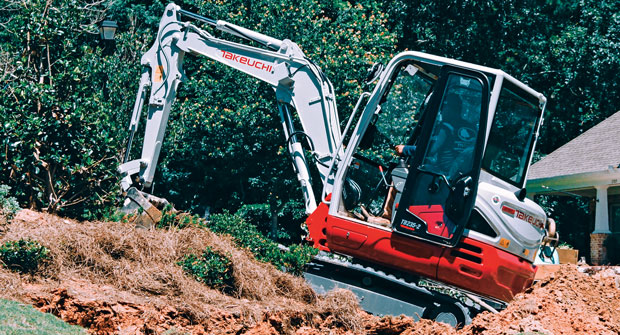Grubs are a yearly pest for lawn care operators (LCOs), and these hungry beetle larvae will do just about anything to feed on grass roots and kill your turf each summer.
Grubs are white, C-shaped larvae with legs near their heads and soft, worm-like bodies. They feed in early summer before pupating and turning into a beetle that will soon lay eggs in the soil in midsummer, effectively repeating the damaging cycle.
Know your type
Bobby Kerr, technical services manager for Quali-Pro, says the kind of grubs one may experience are often based on their geographic location. For example, Japanese beetle grubs (Popillia japonica) and European chafers (Amphimallon majale) are more commonly found in eastern and Midwestern states, while masked chafers (Cyclocephala spp.) appear more often in the south.
Kerr says other geographical factors such as climate and local environmental conditions could impact the prevalence of each grub type, and knowing what exactly you’re dealing with helps identify the most effective solutions.
“Local extension services or agricultural departments often provide region-specific information on the types of grubs and other pests that are common in specific areas, helping LCOs tailor their pest management strategies accordingly,” Kerr says.
Find your spot
Most grubs usually leave a similar path of destruction behind them, such as yellowing, wilting turf, dead patches and loose grass. However, pinpointing the exact kind of damage done by grubs is important to help identify the specific species causing trouble.
According to Kerr, Japanese beetle and European chafer grubs feed on grass roots in a patchy pattern, leading to irregularly shaped dead patches in lawns. Meanwhile, June beetle (Phyllophaga spp.) grub damage is more localized, and LCOs can also try identifying the type of beetle present once the adults hatch from the ground.
Kerr says birds and other animals can sometimes dig up grubs munching on grass roots, which can at least indicate where grubs are feeding at the expense of further lawn damage.
“Overall, while the general symptoms of grub damage — wilting, thinning, spongy turf — are similar across different types of grubs, the specific patterns and severity can vary,” Kerr says. “Understanding the specific type of grub causing the damage can help LCOs tailor their management strategies more effectively, whether through preventive measures or targeted treatments.”
Treat them right
Treating for grubs, whether preventively or curatively, is all about timing.
“Proactive monitoring for early signs of grub damage in late spring to early summer allows LCOs to apply preventive treatments at the optimal time, typically in early summer,” Kerr says. “Regular observation and timely action are key to effective grub management in lawn care.”
Depending on geographic location, catching grubs in the early summer while they’re feeding close to the surface is a great way to prevent them, and curative treatments in late summer to early fall may be necessary if further damage becomes evident, Kerr explains.
For preventative treatments, Kerr recommends both insecticides or beneficial nematodes, which can infect and kill larvae in the soil. He says certain nematode species such as Heterorhabditis bacteriophora and Steinernema feltiae offer a natural, environmentally friendly approach. New insecticides, such as those containing Bacillus thuringiensis strains specific to grub larvae or others with new active ingredients, also offer effective target control with reduced impact on other organisms.
Kerr explains that simple practices such as proper irrigation, mowing and soil management can also keep turfgrass healthy and reduce its susceptibility to grubs.
“(Increase) emphasis on selecting products with lower environmental impact, such as reduced toxicity to non-target organisms and minimal persistence in the environment,” Kerr says. “Adopting an integrated approach that combines chemical control with biological and cultural practices can maximize effectiveness while minimizing environmental impact.”



